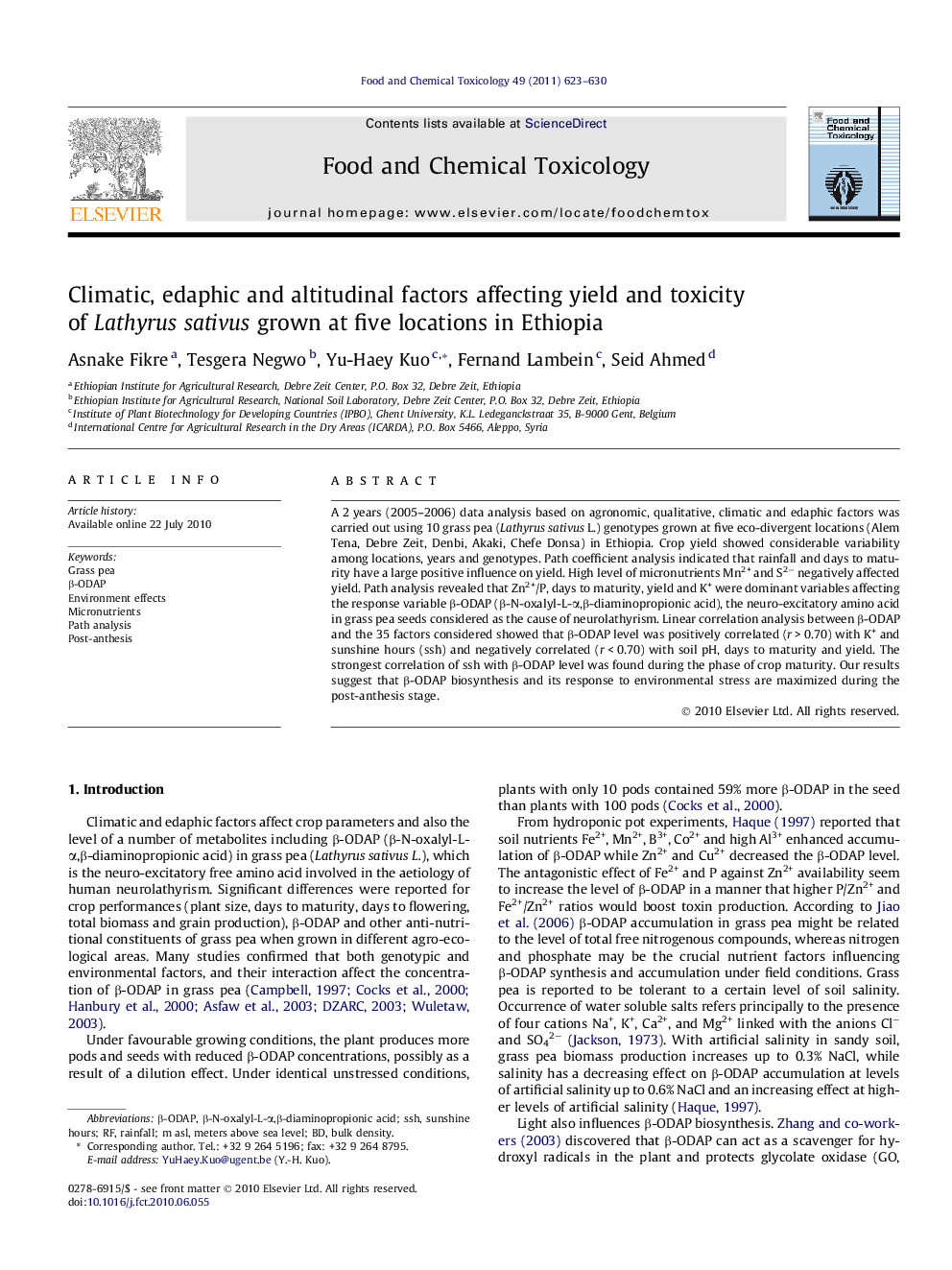| کد مقاله | کد نشریه | سال انتشار | مقاله انگلیسی | نسخه تمام متن |
|---|---|---|---|---|
| 2585386 | 1130864 | 2011 | 8 صفحه PDF | دانلود رایگان |

A 2 years (2005–2006) data analysis based on agronomic, qualitative, climatic and edaphic factors was carried out using 10 grass pea (Lathyrus sativus L.) genotypes grown at five eco-divergent locations (Alem Tena, Debre Zeit, Denbi, Akaki, Chefe Donsa) in Ethiopia. Crop yield showed considerable variability among locations, years and genotypes. Path coefficient analysis indicated that rainfall and days to maturity have a large positive influence on yield. High level of micronutrients Mn2+ and S2− negatively affected yield. Path analysis revealed that Zn2+/P, days to maturity, yield and K+ were dominant variables affecting the response variable β-ODAP (β-N-oxalyl-L-α,β-diaminopropionic acid), the neuro-excitatory amino acid in grass pea seeds considered as the cause of neurolathyrism. Linear correlation analysis between β-ODAP and the 35 factors considered showed that β-ODAP level was positively correlated (r > 0.70) with K+ and sunshine hours (ssh) and negatively correlated (r < 0.70) with soil pH, days to maturity and yield. The strongest correlation of ssh with β-ODAP level was found during the phase of crop maturity. Our results suggest that β-ODAP biosynthesis and its response to environmental stress are maximized during the post-anthesis stage.
Journal: Food and Chemical Toxicology - Volume 49, Issue 3, March 2011, Pages 623–630